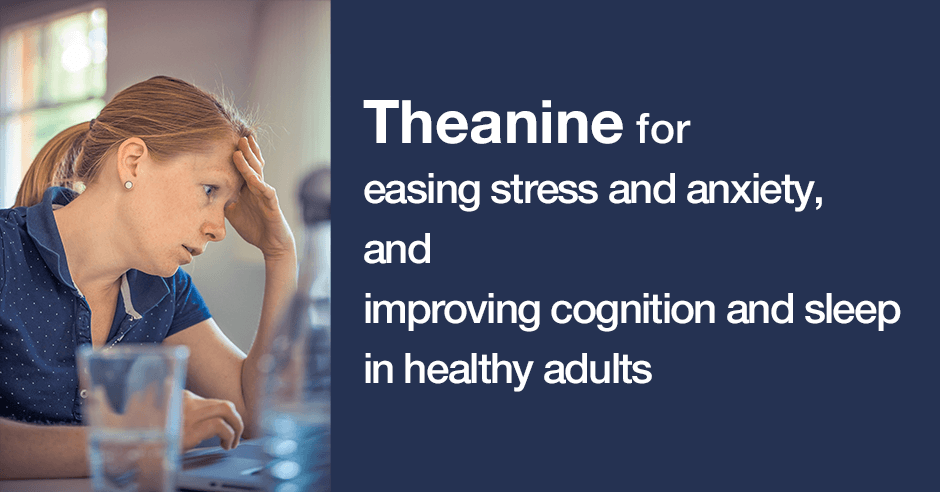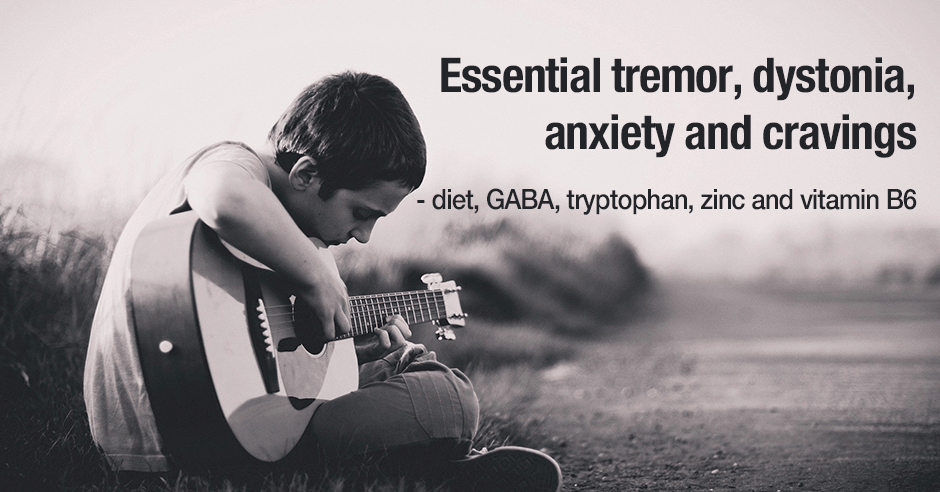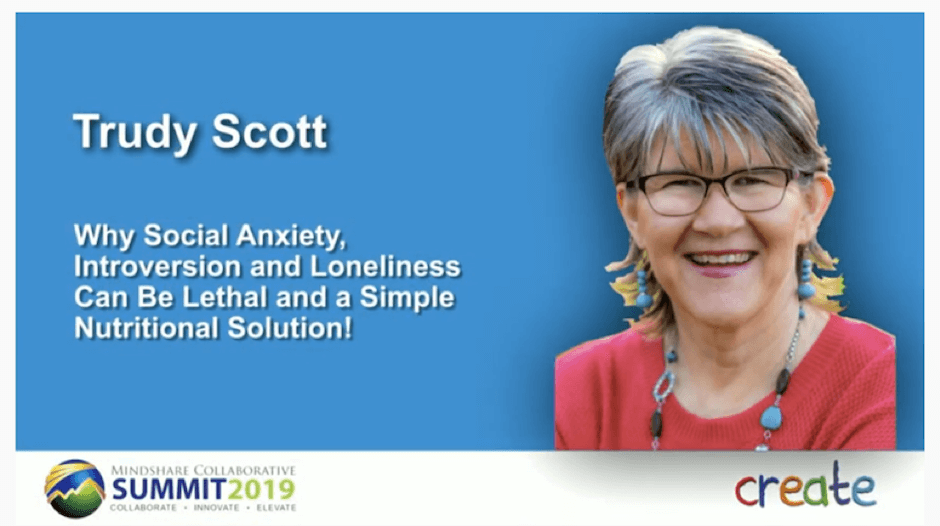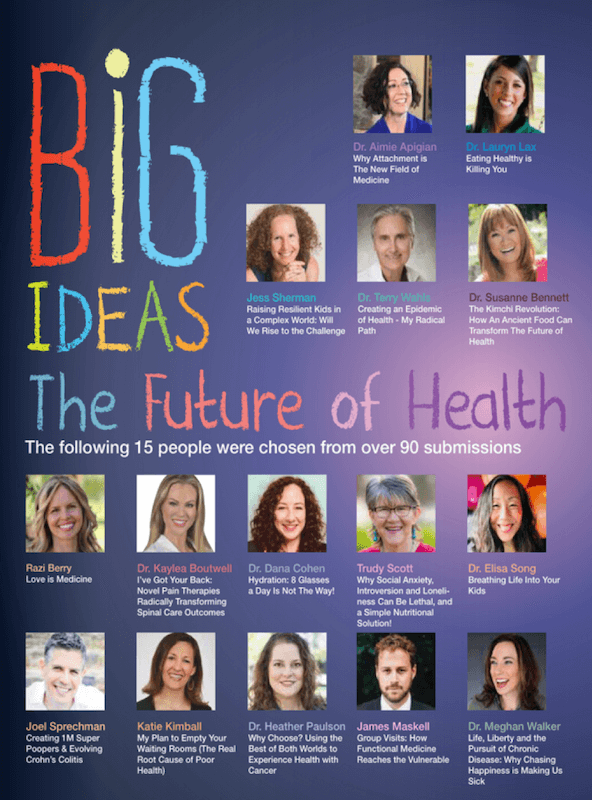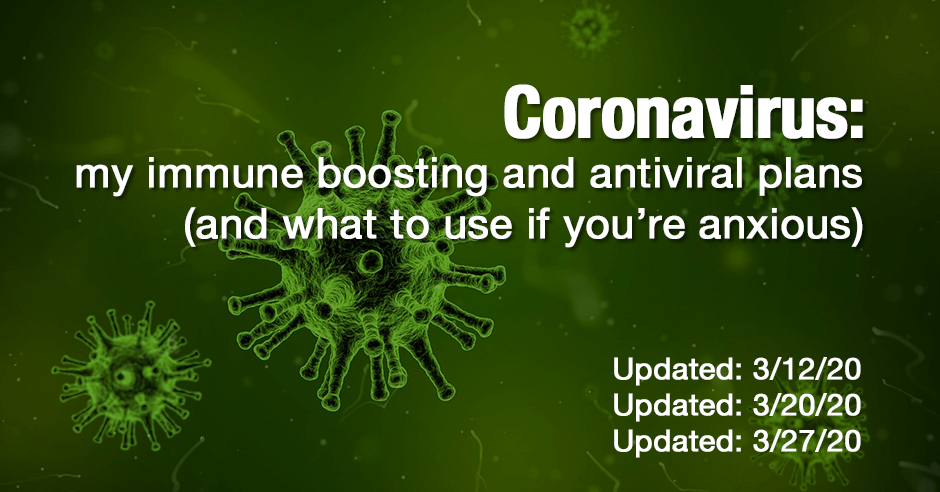
3/27/20: Updated with a good blog post on elderberry (addressing cytokine storm concerns); an excellent video on “The Coronavirus Explained”; 3 new and promising coronavirus/COVID-19 studies on gut health and melatonin; an excellent hand-washing video I encourage you to watch with your families; a recap on using GABA, tryptophan, DPA, glutamine and tyrosine for emotional support
3/20/20: Updated with webinar information so you can post your questions.
3/12/20: Updated as a result of the situation in Italy and the WHO pandemic declaration – Italy overwhelmed with not enough ICU beds and ventilators; predictions the USA healthcare system (and other countries) will likely not be able to handle a similar situation; stay home and immune-boosting advice from Dr. David Brady; additional resources from Dr. Elisa Song; and more on hand-washing
1/31/20: Originally published – vitamin C and foundational nutrients; my other immune boosting nutrients and first aid kit; GABA or tryptophan if you are worried, overly anxious or fearful
UPDATES 3/27/20:
Coronavirus explained, gut health, elderberry, melatonin and more
So much is changing so quickly and there is so much to learn about the coronavirus. I am spending all my time pouring through the literature, learning from other practitioners, reaching out to researchers and trying to connect some of the dots for you. For this reason I’ve decided to do an update each week to this blog and add new findings and relevant information for you.
I’ve updated this blog again TODAY with a good blog post on elderberry, an excellent video on “The Coronavirus Explained” and 3 new and promising coronavirus/COVID-19 studies on gut health and melatonin. I will be taking a deeper dive into these studies, sharing my perspectives related to the anxiety nutrition work I do. I also share an excellent hand-washing video I encourage you to watch with your families! And a recap on using GABA, tryptophan, DPA, glutamine and tyrosine for emotional support.
Elderberry concerns about it triggering a cytokine storm – put to rest
There have been many questions about elderberry and concerns about it possibly triggering a cytokine storm. Suzy Cohen addresses all these concerns here: In Defense of Precious Elderberries
The misinformation you’re getting was based upon a research article that evaluated blood cells in test tubes. It was not a well-designed, placebo-controlled clinical trial. It was not even done on real live people (in vivo).
A number of my respected colleagues agree with her conclusions: “compounds from elderberries can directly inhibit the [flu] virus’s entry and replication in human cells, and can help strengthen a person’s immune response to the virus.” More here.
Understanding the Coronavirus
I found this video very helpful for understanding the coronavirus: The Coronavirus Explained & What You Should Do
New and promising coronavirus/COVID-19 studies on gut health
Here are two new coronavirus/COVID-19 gut health studies. I will be taking a deeper dive into these studies in a future blog post, sharing my perspectives related to the anxiety nutrition work I do. For now, here are the links. It’s very preliminary research but if you tuned in to the recent Anxiety Summit 5: Gut-Brain Axis, you know how promising this is:
Although no specific antiviral treatment has been recommended to date, we speculate that probiotics may modulate the gut microbiota to alter the gastrointestinal symptoms favorably and may also protect the respiratory system
Nutritional and gastrointestinal function should be assessed for all patients. Nutritional support and application of prebiotics or probiotics were suggested to regulate the balance of intestinal microbiota and reduce the risk of secondary infection due to bacterial translocation.
Anxiety and fear were common in patients with COVID-19. Therefore, we established dynamic assessment and warning for psychological crisis.
I address anxiety in all the work I do an agree it needs to be at the forefront for everyone. I take a deeper dive into GABA and theanine and the anxiety/sleep/immunity connections in this recent blog: GABA and theanine for easing anxiety, improving sleep and supporting immunity.
Melatonin as a potential treatment: new research
This in press and pre-proof paper on melatonin is also very promising: COVID-19: Melatonin as a potential adjuvant treatment:
Melatonin, a well-known anti-inflammatory and anti-oxidative molecule, is protective against ALI/ARDS [acute lung injury/acute respiratory distress syndrome] caused by viral and other pathogens. Melatonin is effective in critical care patients by reducing vessel permeability, anxiety, sedation use, and improving sleeping quality, which might also be beneficial for better clinical outcomes for COVID-19 patients. Notably, melatonin has a high safety profile.
I will also be taking a deeper dive into this study in a future blog post, sharing my perspectives on serotonin, melatonin, anxiety and sleep.
THE best hand-washing video!
This is THE best hand-washing video I’ve come across. It was even retweeted and acknowledged by WHO Director General, Dr Tedros Adhanom Ghebreyesus.
I’m pretty sure I may have been missing my thumbs! What about you?

I don’t know how to share a video from twitter other than share the twitter link so I hope you can watch it.
We’re using soap at home and have one designated person in our household of four adults going out to pick up food items. This is the time we use hand-sanitizer (and gloves). Here is another blog on How to Make Your Own Hand Sanitizer in case you’re in a similar situation to us and can’t find ingredients to make more. Suzy mentions vinegar and colloidal silver in this one and shares a number of practical recipes.
IV vitamin C, oxalates, anti-malarial drugs and losss of smell and taste
It’s so encouraging that New York hospitals are treating coronavirus patients with vitamin C. There are, however, concerns for folks who have dietary oxalate issues (with both oral and IV vitamin C). I’ve been gathering feedback and research on this topic and will hopefully have more to share next week.
I also have some major concerns about the anti-malarial drugs chloroquine and hydroxychloroquine and will share those, together with my perspectives on the loss of smell and taste as a possible marker of infection.

Until then, here is another little “bouquet of hope” from our garden to you … My darling mom-in-law brought this lovely little arrangement to me in my home office earlier this week! Aren’t I a lucky girl!?
Amino acids for emotional support, good sleep and to prevent comfort-eating
Finally, don’t forget about the amino acids for added emotional and nutritional support (our needs are higher at a time like this):
- GABA for physical tension and anxiety (more here)
- tryptophan for excessive worrying and feeling fearful (more here)
- glutamine if you’re not eating well and getting blood sugar crashes, and for gut healing (more here)
- tyrosine if you just can’t focus and want to curl up in bed (more here)
- and DPA if you’re feeling overly emotional and weepy, comfort-eating is your support right now (more here)
This blog, The Antianxiety Food Solution Amino Acid and Pyroluria Supplements, lists the products that I use with my individual clients and those in my group programs.
Please feel free to comment on any of the above new developments and share what you are learning too. And do let me know if this format is helpful for you.
Keeping you in my thoughts! And keeping you informed and empowered so anxiety is less of an issue.
UPDATES 3/20/2020:
I’m planning a series of webinars to get your coronavirus questions answered:
- I’m planning to interview a health coach/colleague living in Italy/Germany right now and have her share her experiences about living in lock-down and more about the situation in Europe
- I’m planning to interview Dr. David Brady to share his patient protocols for immunity, testing and much more
- I’ll be doing one with me talking about best how to deal with the anxiety, worry and laying awake until 3am fearful. Anxiety and lack of sleep adversely impact immunity so we have to sort that out. I’ll also cover the many nutrients for anxiety that also support immunity
- I’m looking for an expert to talk about vitamin C and the risks for those with dietary oxalate issues, and other viable and safe options instead of vitamin C
- I’ll be interviewing a doctor on the role of melatonin in counteracting severe inflammatory responses such as pro-inflammatory cytokines. It’s being theorized that older individuals are being more impacted because of low melatonin levels and it’s because children have higher levels of melatonin they are less impacted.
I hope these will be helpful for you? What questions do you have for each webinar (please list the webinar # and the question/s when you comment below. Please don’t send your questions via email – as you can imagine we are receiving a large number of emails!) Let me know what other information you are looking for.
UPDATES 3/12/2020:
The situation in Italy has me concerned
At the time of initial publication of this blog at the end of January, I was in agreement with what the Orthomolecular Medicine News Service were suggesting – we were reading a lot of media hype.
I am not one for fear-mongering, but after reading this very sobering account by two Italian doctors 2 days ago, I am now much more concerned about the coronavirus for the folks who will be most severely impacted – the elderly and the immune-compromised.
In Italy they do not have enough ventilators or ICU beds. Dr. Jason Van Schoor shared warnings from a colleague working in Northern Italy:
I feel the pressure to give you a quick personal update about what is happening in Italy, and also give some quick direct advice about what you should do.
First, Lombardy is the most developed region in Italy and it has a extraordinary good healthcare, I have worked in Italy, UK and Aus and don’t make the mistake to think that what is happening is happening in a 3rd world country.
The current situation is difficult to imagine and numbers do not explain things at all. Our hospitals are overwhelmed by Covid-19, they are running 200% capacity
We’ve stopped all routine, all ORs have been converted to ITUs and they are now diverting or not treating all other emergencies like trauma or strokes. There are hundreds of pts with severe resp failure and many of them do not have access to anything above a reservoir mask.
Patients above 65 or younger with comorbidities are not even assessed by ITU, I am not saying not tubed, I’m saying not assessed and no ITU staff attends when they arrest.
We have seen the same pattern in different areas a week apart, and there is no reason that in a few weeks it won’t be the same everywhere
You can read the entire thread on Twitter here. At first glance there is skepticism and disbelief this could be happening but a trusted colleague in San Francisco has heard similar accounts from doctors she knows in Italy. It’s thanks to her that I started digging deeper into the situation in Italy and had my mind changed.
And this article in the New York Times was also just published confirming much of this: Italy’s Health Care System Groans Under Coronavirus — a Warning to the World. They they do mention doctors being muzzled which is very concerning. We need transparency if we are to learn.
Predictions the USA healthcare system (and other countries) will likely not be able to handle a similar situation
This article supports what is happening in Italy, with serious predictions for the USA (and presumably other countries too) – What does the coronavirus mean for the U.S. healthcare system? Some simple math offers alarming answers
What does an avalanche of uncharacteristically severe respiratory viral illness cases mean for our health care system? How much excess capacity currently exists, and how quickly could Covid-19 cases saturate and overwhelm the number of available hospital beds, face masks, and other resources …
….like in Italy where this is happening right now!
This is why I am now fully behind social distancing and staying home
I’m still of the opinion I need to focus on healthy living/eating and boosting my immunity (and it’s what me and my family are currently doing) but I am now fully behind social distancing, staying home, not attending big events and not traveling – so this virus can be contained as much as possible. Knowing what I now know about Italy makes this an easy decision which is why I’m sharing it here today – even if it is frightening.
Dr. David Brady, ND, author of The Fibro Fix, provides some basic advice on staying as healthy as possible in this recent video posted on Facebook. His is the calm voice of reason, sharing precautions to take during the COVID-19 pandemic and also fully supporting the social isolation and stay home message. He does mention andrographis for antiviral support, garlic, elderberry, vitamin C, lauric acid (monolaurin), vitamin D, preformed vitamin A (as opposed to beta-carotene), zinc and echinacea as all good nutrients to consider for his patients and family.
Unfortunately, many of my colleagues are still saying it’s media hype, out of control fear-mongering, is not as bad as the flu and there is no way this could happen in a country like the USA, Australia, UK and elsewhere. I know they’ll get on board with all this once they have this information too.
I sincerely hope I am wrong about this and things don’t get as bad as Italy. For now I’m playing it safe.
My hand-washing research
I got called out for not mentioning hand-washing when I first published this blog. My focus was to share my first-aid kit i.e. nutraceuticals I use but KT was is absolutely right
Hand hygiene is the single most important intervention for reducing healthcare associated infections and preventing the spread of antimicrobial resistance.
My assumption was that this is common knowledge but based on this statement in the same paper, perhaps this isn’t the case?
while tremendous progress has certainly been made in this field, a significant amount of work is yet to be done in both strengthening the evidence regarding the impact of hand hygiene and maximizing its implementation
With regard to what to use: antibacterial soap showed little added benefit compared with regular soap
Interestingly this paper also states “Hand hygiene is clearly effective against gastrointestinal and, to a lesser extent, respiratory infections. Studies examining hygiene practices during respiratory illness and interventions targeting aerosol transmission are needed.” I’m not sure of the implications of this for the coronavirus. For now I’m following the guidelines outlined in Dr. Song’s blog (below).
This 2017 Time article, Washing Hands In Cold Water Works As Well As Hot Against Germs, clears up what they say is often conflicting data and has some good guidelines from a study published the same year (it was looking at E. coli bacteria and not viruses): wash hands in cold water, at least 10 secs of lathering and use regular soap. Hand lotion afterwards seems to help too.
Additional resources
I’ve also got some blogs from colleagues to share with you so you have additional resources:
- My friend and colleague Dr. Elisa Song MD shares this very comprehensive blog – Coronavirus (COVID-19): What a Pediatrician Wants You to Know (published late Feb so a little out of date with some of the stats). I’m so pleased to see Dr. Song write about IV Vitamin C and look forward to the outcome of the clinical trial she refers to: Vitamin C Infusion for the Treatment of Severe 2019-nCoV Infected Pneumonia.
It’s an approach the physicians of the Orthomolecular Medicine News Service are recommending and it’s gives me a higher level of comfort in these days ahead.
As I mentioned above I do have some questions and concerns about this vitamin C IV approach (and high doses of oral vitamin C) for folks with oxalate issues (myself included) and for folks with G6PD deficiencies and hemochromatosis. I’ll share more as I learn more.
- And this one from Dr. Song too – Handwashing and Coronavirus: Are you doing it the right way? I encourage you to watch the hand-washing demo videos she links to and show them to your children! This fact is astounding: “If 60% rather than 20% of air travelers maintained clean hands, it could slow down the spread of infections by almost 70%“
- Dr. Song also shares How to Make a 60% Alcohol-Based Hand Sanitizer. “Washing hands with soap and water is the #1 recommended way to prevent the spread of Coronavirus. But if you don’t have access to soap and water, what can you do? The CDC recommends using a hand sanitizer with at least 60% alcohol.“
- A blog from Paleohacks: Thieves Oil What It Is, Benefits & How to Make It. Use Thieves oil as a natural disinfectant around your home. “It’s great for wiping down counters, cleaning toys, disinfecting cutting boards, removing stale odors, freshening trash cans and gym bags, and even cleaning veggies.”
Originally published 1/31/20:
How are you handling all the coronavirus news? Worried? Anxious? Fearful? Or are calmly watching and listening and making sure your immune system is in good shape and you have natural antivirals on hand if necessary? (and updated 3/12/20 – are you taking the stay at home message seriously? much more on that below)
There are still many unknowns but I’ve been gathering some articles and resources for my own personal use. I’m not an expert in infections but since folks in my community are asking I promised to share my first-aid kit and rationale in a blog post.
I can help with the anxiety and fear aspect if all this doesn’t put your mind at ease. I cover how I use individual amino acids with my clients at the end of this blog post.
Vitamin C and other foundational nutrients
This newly published blog by Andrew Saul PhD, Vitamin C Protects Against Coronavirus, offers sage foundational advice that resonates with what I already know:
The physicians of the Orthomolecular Medicine News Service and the International Society for Orthomolecular Medicine urge a nutrient-based method to prevent or minimize symptoms for future viral infection. The following inexpensive supplemental levels are recommended for adults; for children reduce these in proportion to body weight:
Vitamin C: 3,000 milligrams (or more) daily, in divided doses.
Vitamin D3: 2,000 International Units daily. (Start with 5,000 IU/day for two weeks, then reduce to 2,000)
Magnesium: 400 mg daily (in citrate, malate, chelate, or chloride form)
Zinc: 20 mg daily
Selenium: 100 mcg (micrograms) daily
Vitamin C, Vitamin D, magnesium, zinc, and selenium have been shown to strengthen the immune system against viruses.
Additional rationale for vitamin C
In another blog by Andrew Saul PhD, Nutritional Treatment of Coronavirus, offers additional rationale for vitamin C: “Abundant clinical evidence confirms vitamin C’s powerful antiviral effect when used in sufficient quantity” and states that the “physicians on the Orthomolecular Medicine News Service review board specifically recommend at least 3,000 milligrams (or more) of vitamin C daily, in divided doses. Vitamin C empowers the immune system and can directly denature many viruses.”
It’s very encouraging to read that just 200mg a day“given to the elderly resulted in improvement in respiratory symptoms in the most severely ill, hospitalized patients.”
This statement from the above blog puts much of what is considered to be media hype and fear-mongering into perspective: (see below why I no longer feel this is media hype)
“The common cold is a coronavirus, and SARS is a coronavirus, so they are the same viral type” ~ David Jenkins, MD, Professor of Medicine and Nutritional Science, University of Toronto.
I do have some questions and concerns about using high doses of oral vitamin C and vitamin C IV for folks with oxalate issues (myself included). I’m actively seeking answers.
Vitamin D, olive leaf extract, oregano oil, elderberry, NAC and diet
Here are some additional links that I have found or were shared with me (thank you if you shared one of these with me!):
- Vitamin D and the anti-viral state “These results support the hypothesis that vitamin D … may play a major role in the inhibition of viruses.” I’m very aware of the immune-boosting properties of vitamin D.
- Olive leaf extract “decreased the duration of upper respiratory illness in high school athletes.” We always have this on hand and it appears to work well for me and my family so I’ll make sure to keep this in mind.
- Oregano oil – per this article on Holistic Primary care “A number of preliminary in vitro or animal studies have shown that compounds in oregano oil are virustatic and virucidal against several viral pathogens.” I always have oregano oil on hand (and especially when flying) and it always works well for me at the first sign of any bug. I was pleased to come across this research even though we don’t yet have a human study.
- Black elderberry liquid extract “displays an inhibitory effect on the propagation of human pathogenic influenza viruses” and has antimicrobial effects against bacteria responsible for infections of the upper respiratory tract. This is also a firm favorite in our household in the winter months and I seldom need more than one or two doses at the first sign of the sniffles.
- N-acetyl-L-cysteine (NAC) “antioxidants like NAC represent a potential additional treatment option that could be considered in the case of an influenza A virus pandemic.” I’ll be giving NAC more consideration.
- Here are some well-balanced perspectives from Peter D’Adamo on Facebook mentions drinking plenty of water, stocks, garlic (freshly crushed), onions, leeks, elderberry and Andrographis paniculata. He does say “Keep in mind these are just my opinions and observations over a thin veneer of facts.”
Consider lomatium?
Lomatium is not my first choice but I’m listing it here out of interest. Lomatium by Barlow Herbals “During the flu pandemic of 1917-1918, the root came into extensive use by the two Washoe Indian tribes near Carson City, Nevada.” I have yet to try this one but have heard Jane from Barlow Herbals talk about lomatium on a number of summits and I’m intrigued.
My first-aid kit
In summary, here is my first-aid kit: Vitamin C, zinc, extra selenium, vitamin D, magnesium, oil of oregano, olive leaf extract, black elderberry and Biocidin Throat Spray and Xlear Nasal Spray (the latter two are always on hand and I always also travel with them).
I also always have essential oils on hand: tea tree oil, eucalyptus, peppermint, rosemary, lavender and others. I’ll be adding sage per Dr. Elisa Song’s blog (see below).
This is pretty much what I always use other than adding in extra selenium, so it was very affirming to gather all this research.
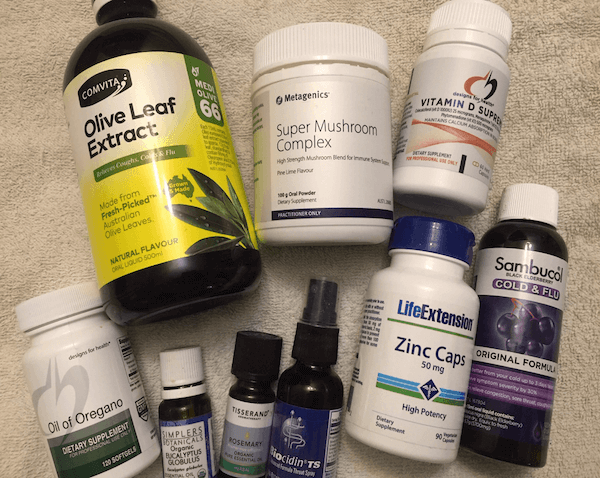
GABA or tryptophan: if worried or overly anxious or fearful
If you’re feeling worried or overly anxious or fearful, the best way is to be informed and prepared. Interestingly, some of the very same nutrients mentioned above also help ease anxiety – vitamin C, zinc, vitamin D, magnesium and selenium and B vitamins – because they are co-factors for making neurotransmitters like serotonin, GABA and dopamine.
If all this information and being prepared isn’t enough to calm you down, then don’t forget the individual amino acids for quick relief. I use GABA for clients who are feeling physically tense and tryptophan or 5-HTP for worry-type of anxiety and if they are imagining the worst and can’t switch off their busy mind off.
We use the trial method to find the ideal amount for each person, starting low and titrating up based on symptoms and then down if not added benefits are seen.
You can find my most popular amino acid products on the supplements blog here (and with details for how to set up an account for my online store). You can find everything else I write about in the store too. Just be sure to work with your practitioner.
My thoughts are with you and all of those currently ill and those who will get ill. We will get through this together.
My hope is that you are less anxious and fearful as you become more informed.
Please share your immune-boosting remedies and your thoughts and plans.
As I mentioned above, these are resources and information I’ve gathered for my own personal use, and are in no way intended to be recommendations.
